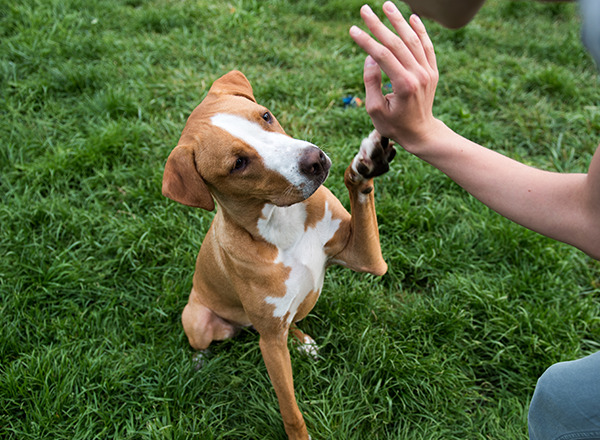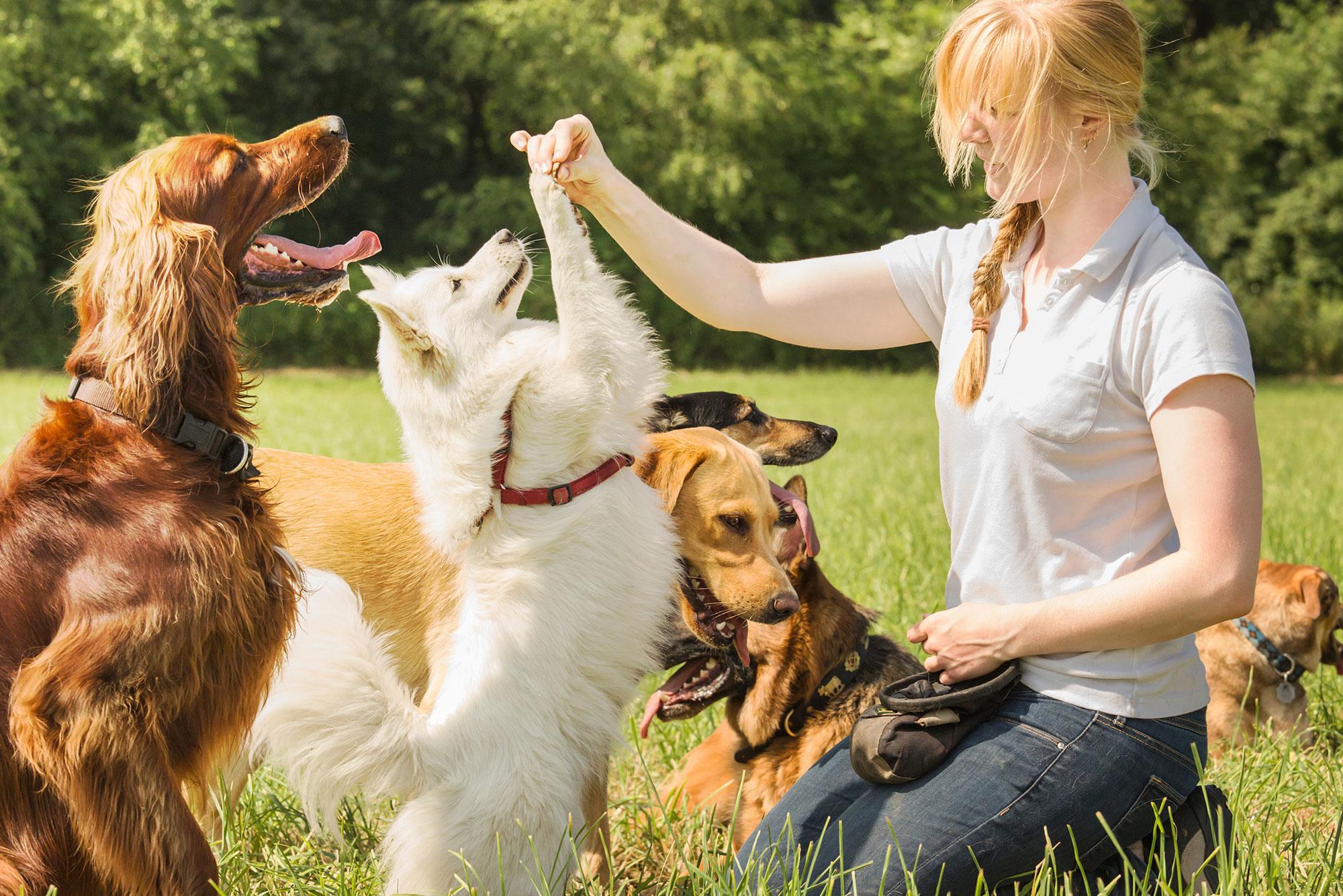Important Tips for Effective Dog Training: A Guide for Pet Owners
Effective dog training is a diverse process that requires a critical technique tailored to both the pet dog's character and the proprietor's goals. Recognizing exactly how to navigate these barriers can substantially enhance the training experience, inevitably transforming the partnership between owner and pet dog.
Understanding Canine Behavior
Comprehending pet habits is crucial for effective training and promoting a harmonious partnership between canines and their owners. dog training. Canines interact primarily with body language, articulations, and activities, making it crucial for owners to interpret these signals properly.

Socializing plays a considerable duty in pet actions; exposure to different environments, people, and various other pets can substantially affect a canine's temperament. Factors such as type features and specific character ought to lead training techniques, as some breeds may have specific behavior characteristics that necessitate customized strategies. By recognizing these aspects, proprietors can produce an encouraging environment that urges favorable behavior, bring about successful training end results and a much deeper bond with their family pets.
Establishing Constant Commands
Effective communication with your pet dog begins with developing regular commands. This foundational component of training is vital for promoting understanding between you and your family pet. Uniformity in the commands you use makes certain that your canine can accurately associate certain words or expressions with the desired behaviors.
When picking commands, choose clear, unique words that are very easy to differentiate and state from one an additional. Avoid utilizing similar-sounding commands that might puzzle your pet. For example, utilizing "rest" and "remain" is ideal, but "sit" and "struck" can bring about misconceptions.
In addition, keep the same tone and quantity for each command. Canines are sensitive to singing hints, so differing your tone can create confusion.
It is just as vital to make certain that all member of the family get on the exact same page regarding the commands made use of. A united front in command usage will certainly protect against mixed signals and reinforce the discovering procedure.
Favorable Support Strategies
The power of favorable reinforcement in pet training hinges on its capability to motivate preferred actions via benefits and praise. This method is based in the concept that actions complied with by positive results are more probable to be repeated. By including favorable reinforcement into your training regimen, you can efficiently form your pet dog's behavior in a constructive fashion.
To execute positive reinforcement, it's important to identify what encourages your canine, whether it be treats, playthings, or verbal appreciation. When your dog performs a wanted activity, such as resting on command, right away compensate them with a reward or love. This association in between the command a fantastic read and the positive result enhances their understanding.
It's important to timing the benefits properly; delivering the support within seconds of the desired actions helps your dog make the link (dog training). Additionally, uniformity is key-- guarantee that all relative use the exact same commands and reward systems to stay clear of complication

Progressively, you can minimize the frequency of treats as your canine discovers the actions, transitioning to praise or intermittent incentives. This method not only fosters a solid bond between you and your pet but also advertises a favorable discovering setting, making training a delightful experience for both.
Socialization and Interaction
Continually subjecting your dog to a selection of environments, individuals, and other pets is important for their social advancement. Socialization needs to begin early, ideally throughout the vital home window of 3 to 14 weeks, when puppies are most receptive to brand-new experiences. Older pets can also profit from ongoing socializing initiatives.
Present your pet to different setups, such as parks, pet-friendly stores, and metropolitan locations. This direct exposure assists them adjust to various stimulations, minimizing anxiousness and worry responses. Encourage positive communications with other canines and individuals, ensuring that these experiences are regulated and risk-free to foster confidence.
Utilize organized playdates with courteous dogs, as this can boost your pet's social abilities and instruct them suitable behavior. Obedience classes and training sessions additionally supply outstanding possibilities for socialization, enabling your canine to engage with others in a monitored atmosphere.
Monitor your pet's body language throughout communications, as this will certainly help you determine their comfort level. informative post Gradually boost direct exposure to more difficult circumstances while making certain that each experience is positive. A well-socialized pet is more probable to show balanced habits, making them a joy to have in any kind of setting.
Attending To Common Training Challenges
Every pet dog owner will certainly experience training challenges at some time, no matter their canine's age or socialization level. Recognizing common issues such as stubbornness, disturbances, and fearfulness can assist in establishing reliable strategies for enhancement.
:max_bytes(150000):strip_icc()/a-dog-trainer-giving-a-hand-command-to-black-labrador-dog--1153579373-cb14c8fb30724468a702c972910c6f2a.jpg)
Interruptions during training sessions can hinder focus. To fight this, start training in a peaceful atmosphere with very little stimulations. Progressively present distractions as the canine ends up being more skillful in commands. Short, regular training sessions are additionally reliable in preserving focus.
Fearfulness can impede a dog's understanding process. Gradual desensitization to the resource of worry, matched with favorable reinforcement, can aid relieve stress and anxiety. Patience is important; never ever force a pet right into a circumstance that triggers distress, as this might intensify the concern.
Inevitably, understanding and attending to these common obstacles with an organized strategy this hyperlink will foster an extra productive training experience, reinforcing the bond between canine and proprietor while advertising effective understanding.
Final Thought
In recap, successful canine training depends on a detailed understanding of canine behavior, the facility of consistent commands, and the application of favorable reinforcement strategies. Socialization plays an important function in creating well-adjusted pets, while resolving typical training obstacles needs perseverance and adaptability. By carrying out these vital strategies, family pet owners can promote a solid bond with their dogs and promote preferable behaviors, eventually leading to a harmonious connection in between humans and their canine friends.
Understanding pet dog actions is important for efficient training and cultivating an unified connection in between pooches and their proprietors.Socialization plays a considerable duty in dog behavior; direct exposure to numerous environments, people, and other animals can considerably affect a pet dog's personality.The power of favorable reinforcement in dog training lies in its capacity to urge wanted behaviors through rewards and praise. By integrating favorable support right into your training routine, you can properly form your pet's habits in a positive fashion.
In recap, effective pet dog training depends on a thorough understanding of canine behavior, the establishment of consistent commands, and the application of favorable support strategies.